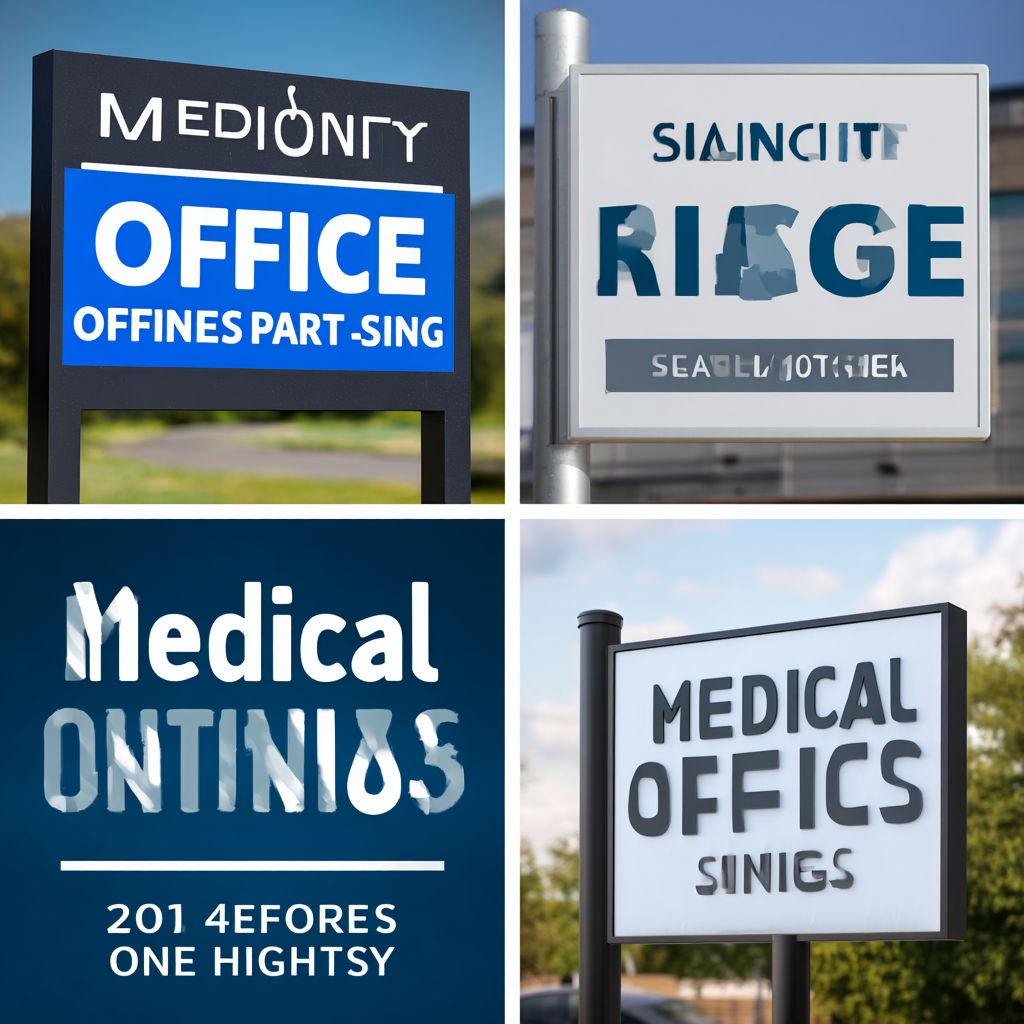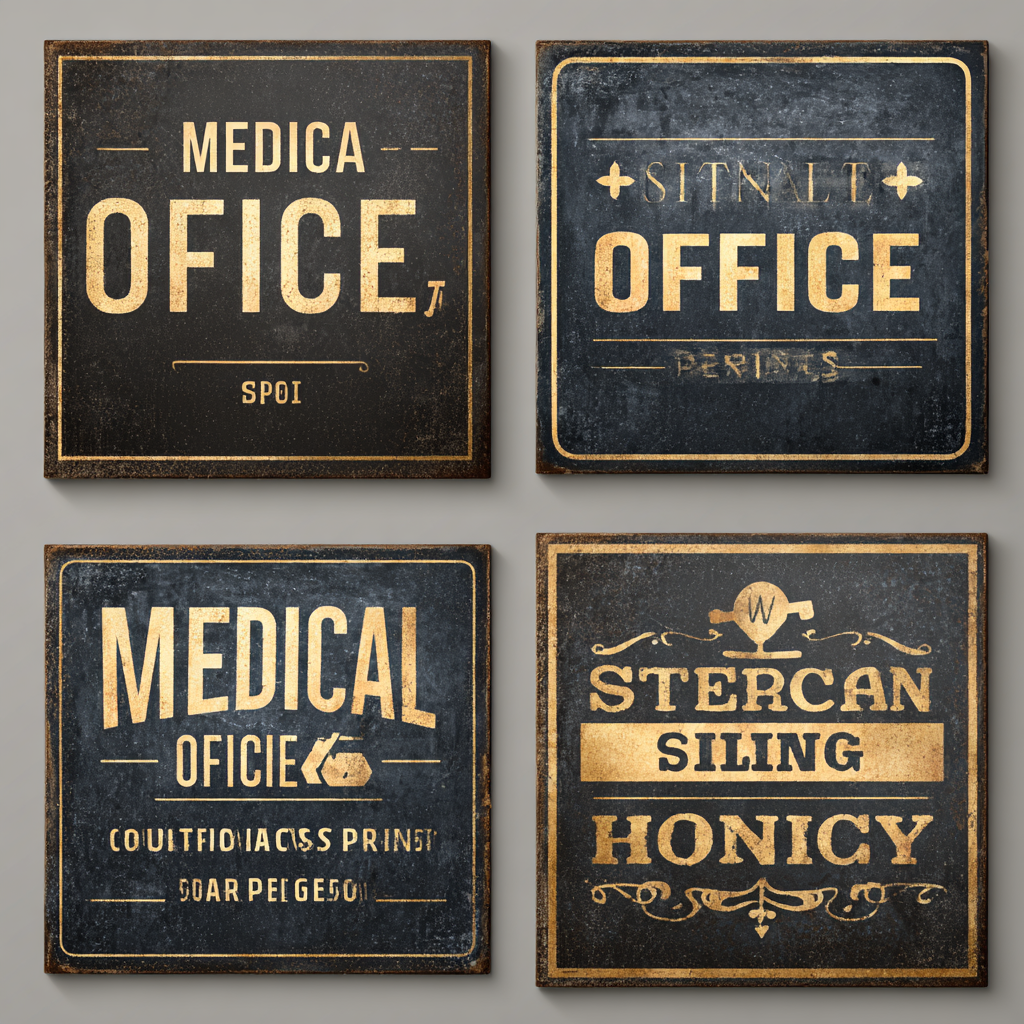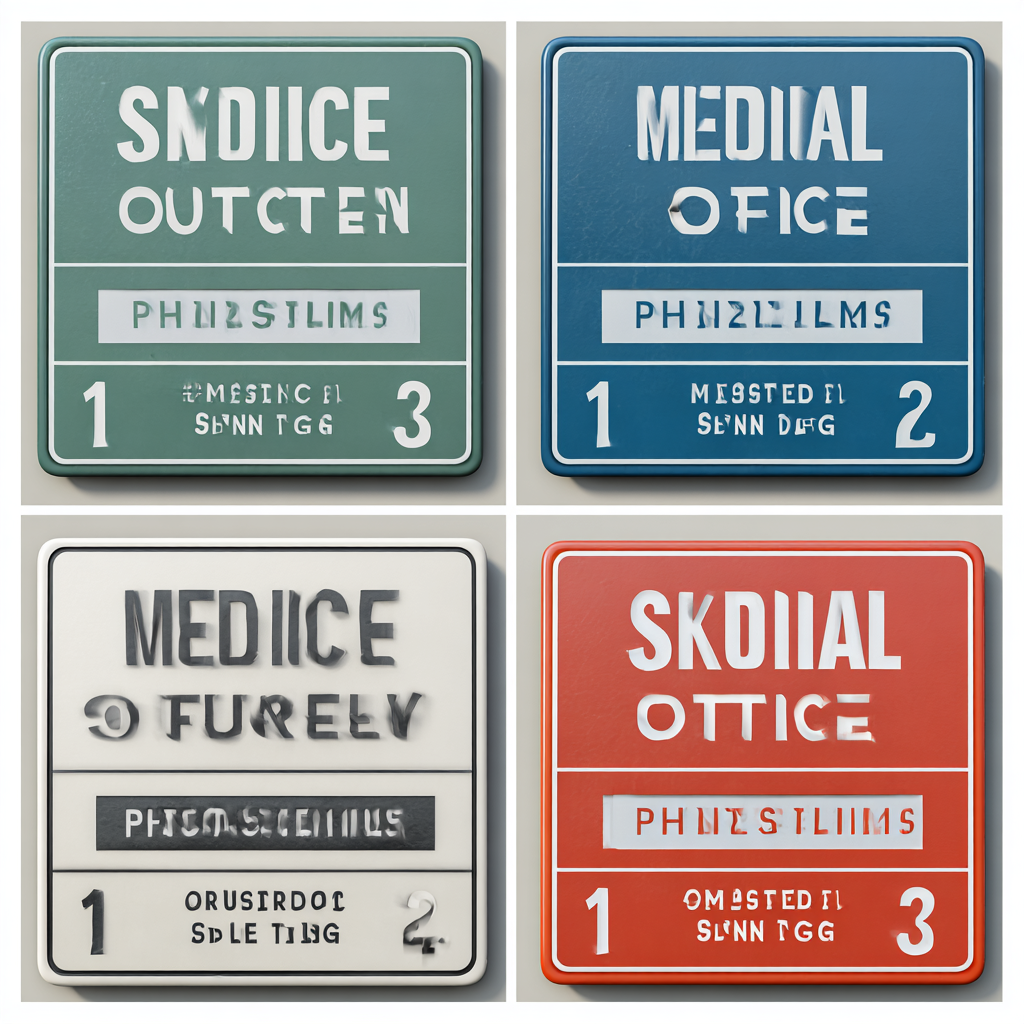



In the ever-evolving landscape of healthcare, the significance of effective communication within medical offices has gained paramount importance. According to the latest industry reports, nearly 70% of patients consider clear and concise signage as a critical factor in their overall satisfaction when visiting a medical facility. As we approach 2025, the role of Medical Office Signs will become increasingly vital in guiding patients through the often-confusing healthcare environment.
The right signage not only enhances the patient experience but also boosts operational efficiency. A study by the American Society of Landscape Architects indicates that strategically placed medical signage can reduce patient wait times by up to 20%, significantly improving service delivery. As healthcare practices navigate the complexities of patient management and branding, selecting the appropriate Medical Office Signs will be crucial in conveying professionalism, ensuring accessibility, and ultimately fostering trust and confidence in patients.
In this guide, we will explore key considerations for choosing the perfect Medical Office Signs for your practice, emphasizing the impact of well-designed signage on patient engagement and operational efficiency. With increasing competition and rising patient expectations, understanding how to effectively utilize signage can be a game-changer for any medical practice.

Medical office signs play a crucial role in patient engagement and navigation within healthcare facilities. According to a report by the Health Facility Research Institute, 74% of patients feel more welcomed and less anxious upon entering a medical office that is clearly and thoughtfully signed. Effective signage not only eases the navigation process but also enhances the overall patient experience, demonstrating a commitment to quality care and attention to patient needs.
In addition to improving patient satisfaction, well-designed medical office signs can significantly impact operational efficiency. A study published in the Journal of Healthcare Management revealed that clear directional signage can reduce patient wait times by up to 30%. This improvement is vital in modern practices where time management is crucial for both healthcare providers and patients. By investing in high-quality signs that convey the right information, medical offices can foster an environment where patients feel informed, valued, and engaged in their healthcare journey.
When selecting medical office signs, several key factors must be taken into account to ensure effectiveness and compliance. First and foremost, consider the visibility and readability of your signs. Studies indicate that signs with clear fonts and contrasting colors can improve comprehension by up to 70%, making it easier for patients to navigate your facility. This is crucial in medical settings where clarity can impact patient experience and safety.
Another important factor is compliance with regulations and standards. For example, the Americans with Disabilities Act (ADA) mandates specific guidelines for signage in public spaces, including size, font, and braille. Adhering to these standards not only enhances accessibility but also avoids potential legal issues.
**Tips:** When designing your signs, prioritize high-contrast colors and simple fonts to improve visibility. Additionally, ensure that signage is placed at eye level and is unobstructed. Lastly, consider incorporating directional signs that guide patients to various departments, as data shows that clear wayfinding can reduce patient anxiety by 30%.

When selecting medical office signs, it’s crucial to understand the various types available and their specific functions. Directional signs play an essential role in guiding patients through the office or facility. These signs can help reduce confusion and anxiety, especially in large medical complexes. Clear and visually appealing directional signs featuring arrows and concise wording direct patients to waiting areas, examination rooms, or specialized departments.
Informational signs are another vital component, as they provide necessary details about services offered, operating hours, and important protocols. For instance, signs that outline patient check-in procedures or highlight safety measures, like mask requirements, can enhance the overall patient experience. Additionally, branding signs, featuring your practice's name and logo, create a welcoming environment and foster trust. By thoughtfully choosing the right combination of these sign types, you can ensure that your medical office is not only functional but also patient-friendly.
When designing effective and compliant medical office signage, it’s vital to keep the needs of your patients in mind. Clear and informative signs guide patients through your practice, enhancing their experience right from the entrance. One of the key tips is to ensure that your signs are not only visually appealing but also legible. Use high-contrast colors and large fonts to accommodate a diverse range of patients, including those with visual impairments.

Another crucial aspect is compliance with local regulations and healthcare standards. Before finalizing your designs, check that your signage meets ADA (Americans with Disabilities Act) guidelines. This includes using tactile characters, braille, and appropriate height and placement for signs. Incorporating easily recognizable symbols, such as universal healthcare icons, can also aid in communication, making your signage intuitive and accessible for everyone visiting your office.
When selecting medical office signs, budgeting is a crucial factor that significantly impacts both quality and cost. It's essential to strike a balance between investing in durable, effective signage and managing expenses. High-quality signs not only enhance your practice’s visibility but also convey professionalism and trustworthiness. Allocate a specific budget while considering both initial costs and long-term benefits, ensuring that your signage remains appealing and functional over time.
**Tips:** Start by conducting a cost analysis of different materials and styles. For instance, opt for aluminum or acrylic, which offer great durability without breaking the bank. Additionally, seek out local vendors who might provide competitive pricing, ensuring that you receive the best value for your investment. It’s beneficial to draft a clear design brief, helping to avoid costly revisions down the line.
Keep in mind that quality signage is an investment in your practice's image. Explore options like LED signs or digital displays, which can be more expensive initially but offer flexibility and energy efficiency. Remember, the right sign will not only attract patients but also represent the ethos of your practice effectively.
| Sign Type | Material | Durability (Years) | Estimated Cost ($) | Recommended For |
|---|---|---|---|---|
| Directional Signs | Aluminum | 10 | 150 | Large Facilities |
| Reception Signs | Acrylic | 7 | 200 | Front Desk Areas |
| Informational Boards | Foam Board | 3 | 80 | Waiting Areas |
| Window Graphics | Vinyl | 5 | 100 | Facades and Entrances |
| Parking Signs | Steel | 15 | 180 | Parking Areas |








